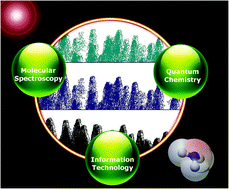Developments during the last two decades in nuclear motion theory made it possible to obtain variational solutions to the time-independent, nuclear-motion Schrödinger equation of polyatomic systems as “exact” as the potential energy surface (PES) is. Nuclear motion theory thus reached a level whereby this branch of quantum chemistry started to catch up with the well developed and widely applied other branch, electronic structure theory. It seems to be fair to declare that we are now in the fourth age of quantum chemistry, where the first three ages are principally defined by developments in electronic structure techniques (G. Richards, Nature, 1979, 278, 507). In the fourth age we are able to incorporate into our quantum chemical treatment the motion of nuclei in an exact fashion and, for example, go beyond equilibrium molecular properties and compute accurate, temperature-dependent, effective properties, thus closing the gap between measurements and electronic structure computations. In this Perspective three fundamental algorithms for the variational solution of the time-independent nuclear-motion Schrödinger equation employing exact kinetic energy operators are presented: one based on tailor-made Hamiltonians, one on the Eckart–Watson Hamiltonian, and one on a general internal-coordinate Hamiltonian. It is argued that the most useful and most widely applicable procedure is the third one, based on a Hamiltonian containing a kinetic energy operator written in terms of internal coordinates and an arbitrary embedding of the body-fixed frame of the molecule. This Hamiltonian makes it feasible to treat the nuclear motions of arbitrary quantum systems, irrespective of whether they exhibit a single well-defined minimum or not, and of arbitrary reduced-dimensional models. As a result, molecular spectroscopy, an important field for the application of nuclear motion theory, has almost black-box-type tools at its disposal. Variational nuclear motion computations, based on an exact kinetic energy operator and an arbitrary PES, can now be performed for about 9 active vibrational degrees of freedom relatively straightforwardly. Simulations of high-resolution spectra allow the understanding of complete rotational–vibrational spectra up to and beyond the first dissociation limits. Variational results obtained for H2O, H+3, NH3, CH4, and H2CCO are used to demonstrate the power of the variational techniques for the description of vibrational and rotational excitations. Some qualitative features of the results are also discussed.


 Please wait while we load your content...
Please wait while we load your content...